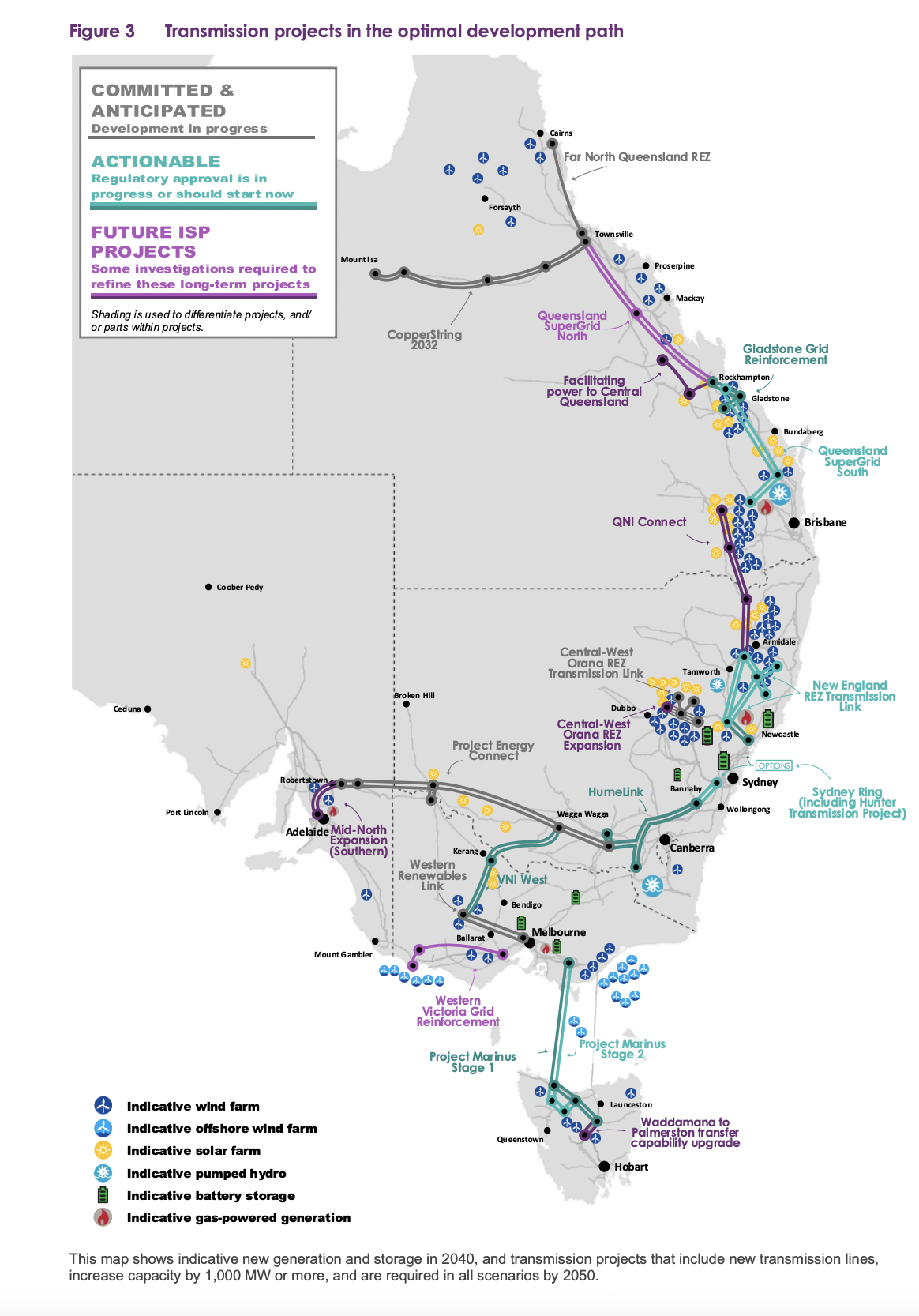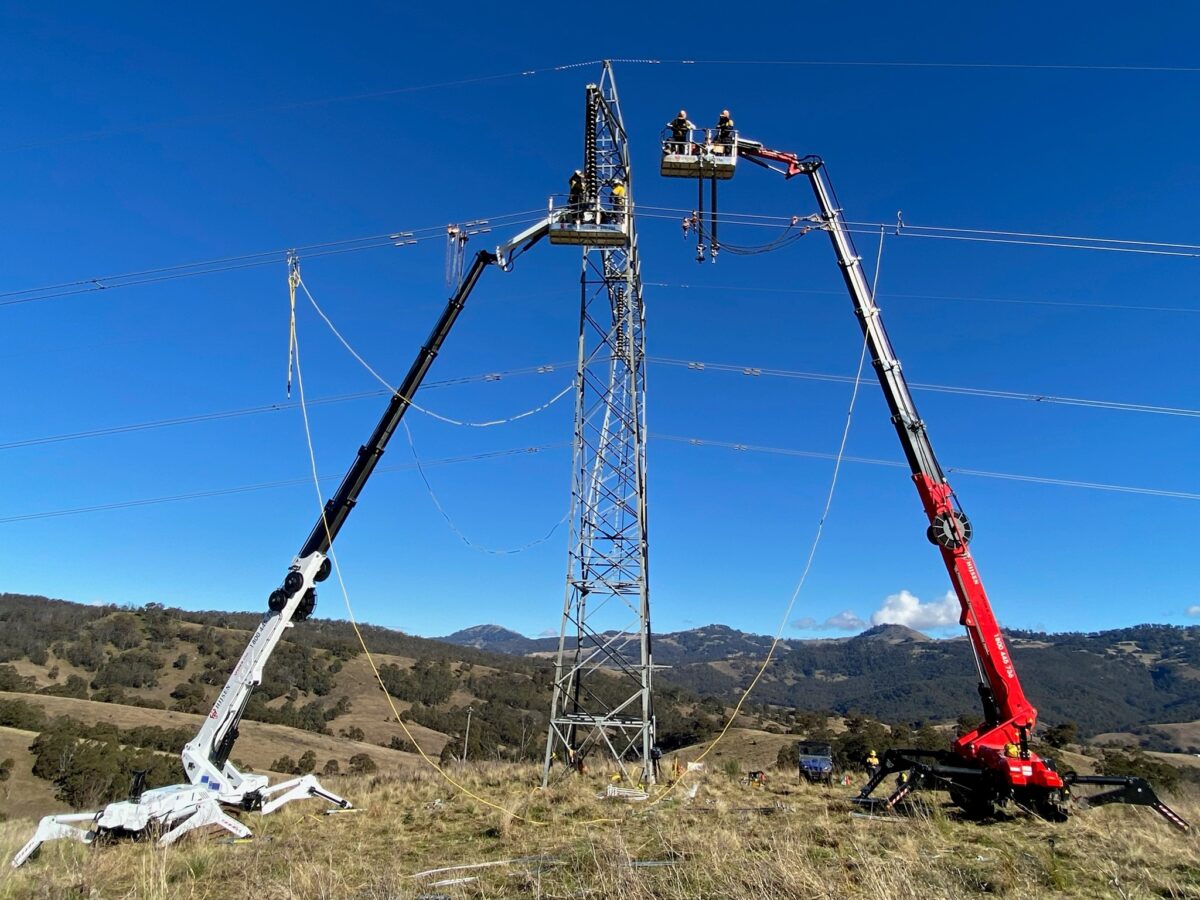Rystad showed $3.1 trillion must be invested into inadequate and outdated grid infrastructure globally before 2030 – 70 months from now – if global warming is to be limited to 1.8 C above pre-industrial levels.
Stating $644 billion will be spent around the world on new capacity this year, the research found an additional 18 million kilometers of grid network requiring nearly 30 million tons of copper, is needed to keep pace with electrification.
Closer to home, in its 2024 Draft Integrated System Plan (Draft ISP), the Australian Energy Market Operator (AEMO) forecasts close to 10,000 km of transmission will be needed in Australia by 2050, and about 5,000 km of this delivery occurring in the next decade, creating 4,000 km of new corridors and the upgrade of about 1,000 km of existing lines.

Victorian situation
Grid upgrades are discussed extensively in the Draft ISP, which were brought into sharp focus this week in Victoria. A report from the Melbourne Age newspaper today found in a report that 13,000 Victorian pylons are rusty and 50 have toppled in strong wind since 1959, 25 of them in the last 15 years.
The VNI West, a new high capacity 500 kV double-circuit line to connect Western Renewables Link (from Bulgana) with Project EnergyConnect and HumeLink (at Dinawan) via a new substation near Kerang is due for completion in December 2029, at a cost of $3.6 billion, will be built with towers governed by a new building storm-resistant code.
However, older structures remain in the network which were built to historical design standards with inadequate strength to withstand convective downdraft winds occurring in extreme storm events, according to the AusNet Services 2023-2027 Transmission Revenue Reset report.
It says 45 structures had functional failures associated with eleven extreme wind events affecting Victoria’s transmission network since 1959, stating approximately 78% of the tower fleet would be retrofitted with Fall Arrest Systems (FAS) by 2022.
Grid expansion needed
Edvard Christoffersen, senior analyst Rystad Energy said with regard to the global study, power grids will be both an enabler and an obstacle to the energy transition.
“Mature grids have enabled the rapid expansion in solar and wind capacity seen in recent years, but many national grids are now near or at the point where further connections cannot be made without upgrading or expanding them. Annual investment levels must increase if the current trend of renewable energy buildout is to continue,” Christoffersen said.
For Australia to achieve the needed 10,000 km of transmission lines by 2050 to align with climate change targets, it’s Optimal Development Path (ODP) for transmission projects through to 2050 come at a cost of around $16.4 billion or about 13% of the total cost of all generation, storage, firming, and transmission infrastructure valued at $121 billion.
According to the Department for Climate Change, Energy, the Environment and Water (DCCEEW), Rewiring the Nation program will provide $20 billion of low-cost finance for transmission investment to modernise the grid and implement the ISP.
The federal government is also providing $75 million for the design and approvals phase of Marinus Link and over $250 million in underwriting support for VNI West to support early works and enable it to share infrastructure with EnergyConnect to reduces cost to consumers or affected communities and landholders.
Regardless, risks to achieving timely energy transition relying on an aging transmission grid exist if delays of the ODP occur, through interruptions such as storm events, but also from slow approval processes, investment decision uncertainty, cost pressures, social licence issues, supply chain issues and workforce shortages.
“The possibility that replacement generation is not available when coal plants retire is real and growing, and a risk that must be avoided. The sooner firmed renewables are connected, the more secure the energy transition will be,” the Draft ISP says.
Submissions to the AEMO Draft ISP closed today and the final ISP is scheduled to be published with supporting material on June 28 2024.
This content is protected by copyright and may not be reused. If you want to cooperate with us and would like to reuse some of our content, please contact: editors@pv-magazine.com.








By submitting this form you agree to pv magazine using your data for the purposes of publishing your comment.
Your personal data will only be disclosed or otherwise transmitted to third parties for the purposes of spam filtering or if this is necessary for technical maintenance of the website. Any other transfer to third parties will not take place unless this is justified on the basis of applicable data protection regulations or if pv magazine is legally obliged to do so.
You may revoke this consent at any time with effect for the future, in which case your personal data will be deleted immediately. Otherwise, your data will be deleted if pv magazine has processed your request or the purpose of data storage is fulfilled.
Further information on data privacy can be found in our Data Protection Policy.